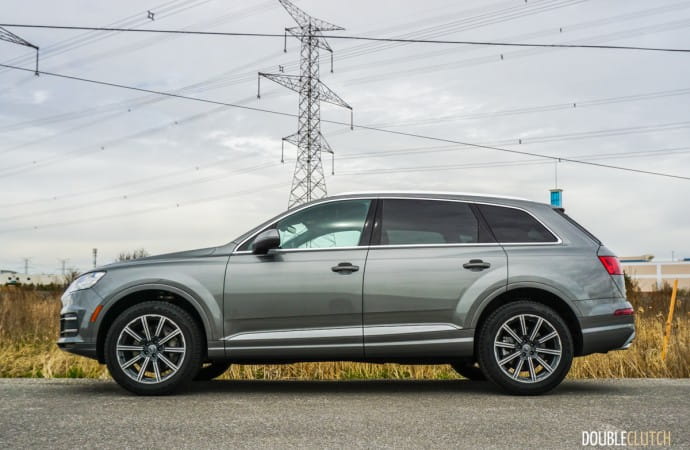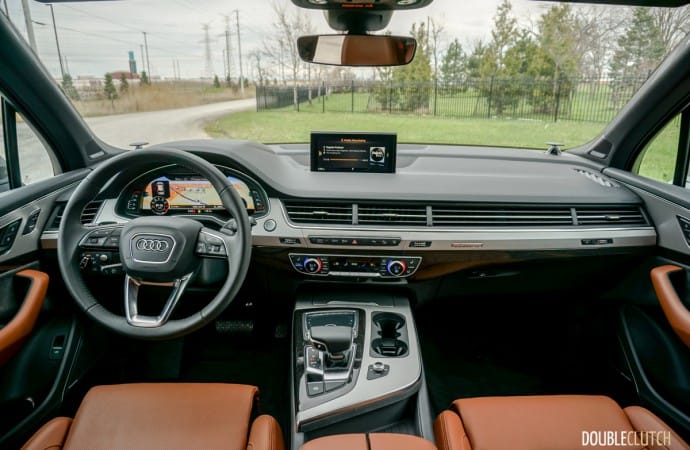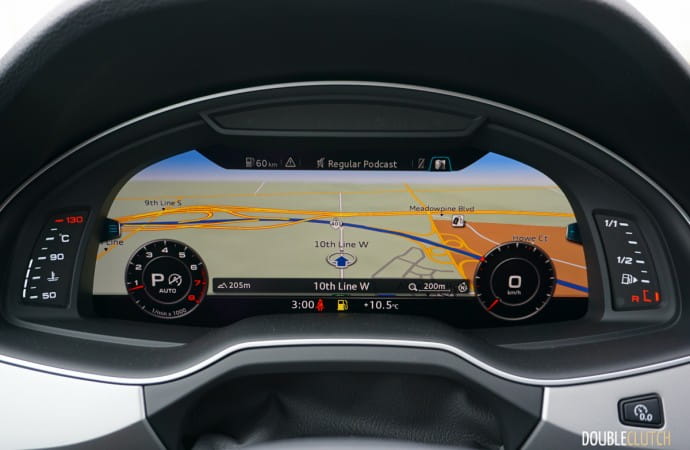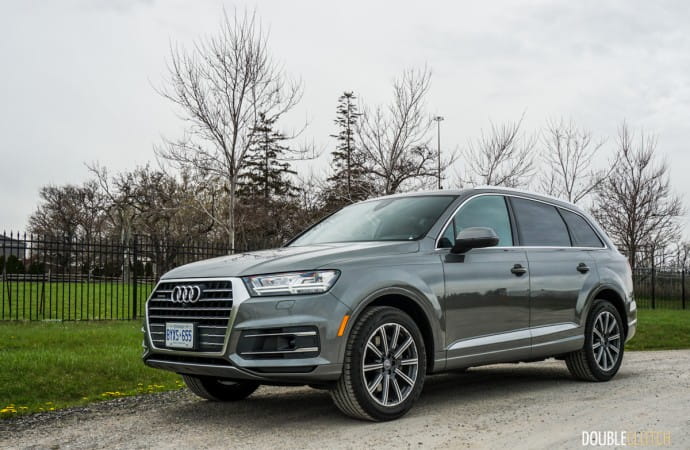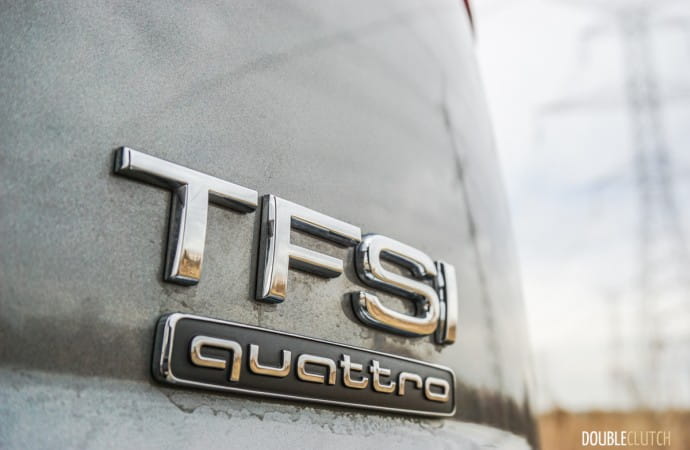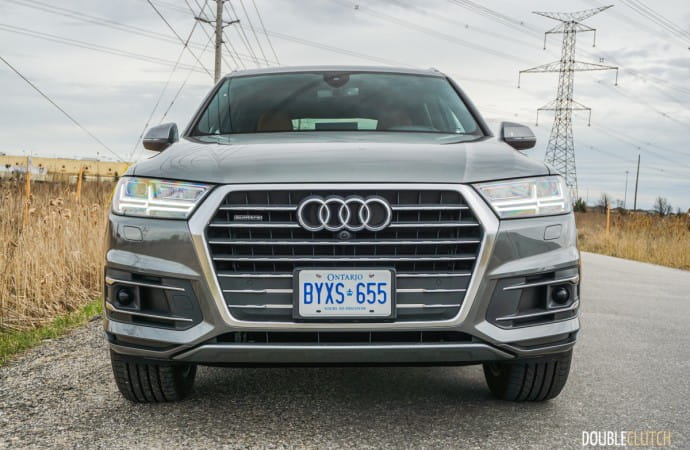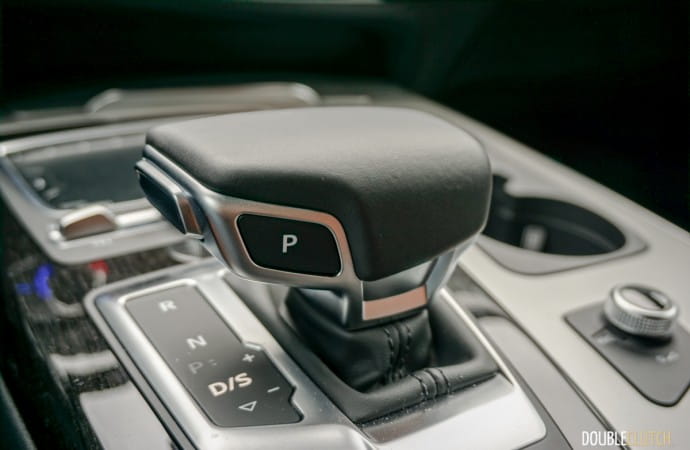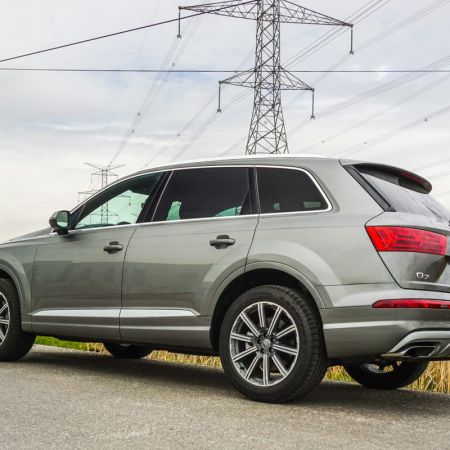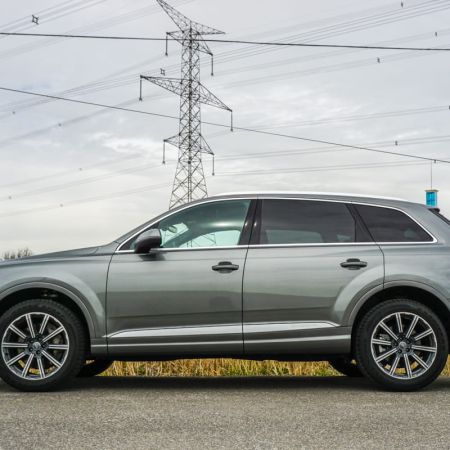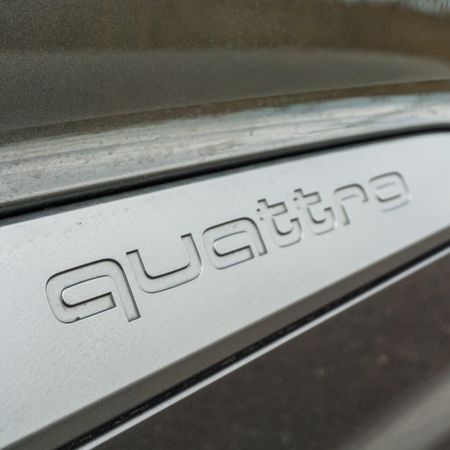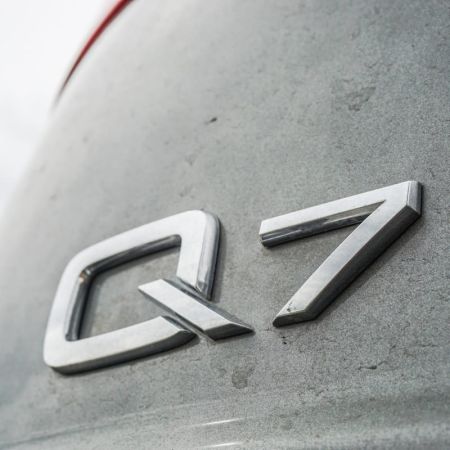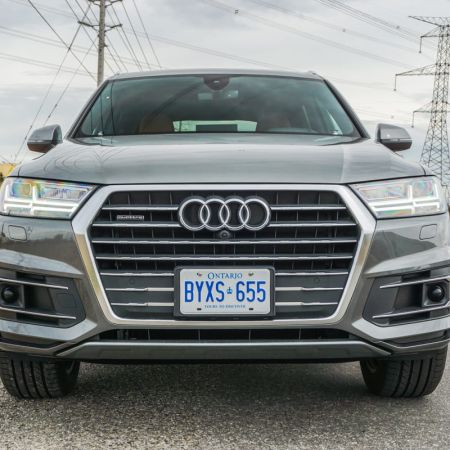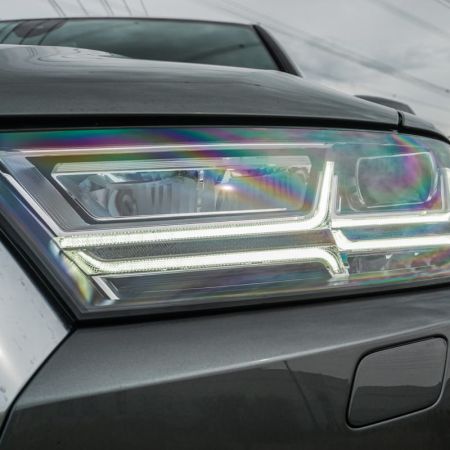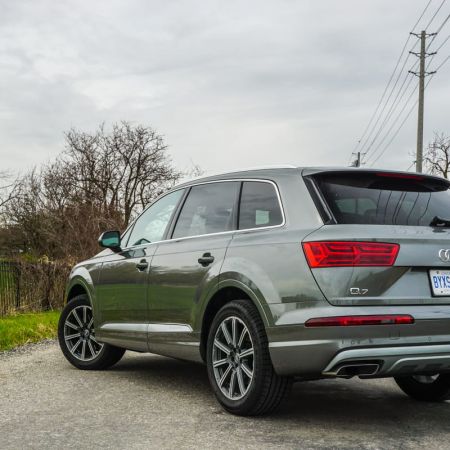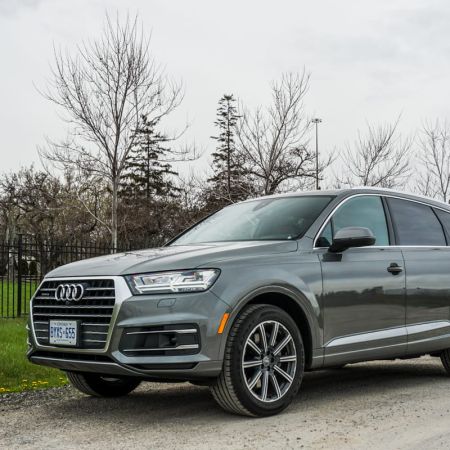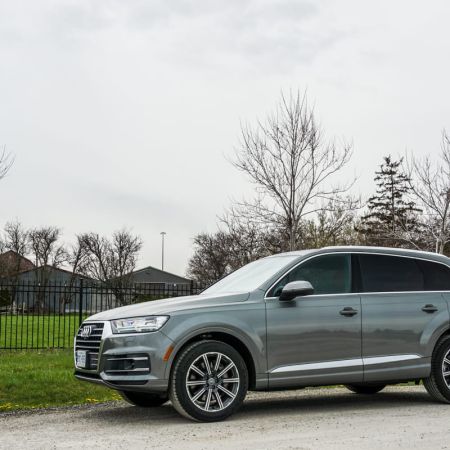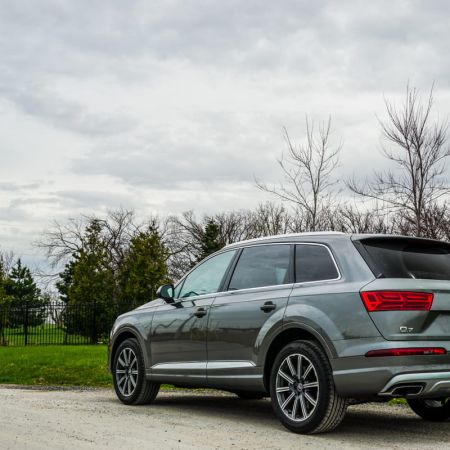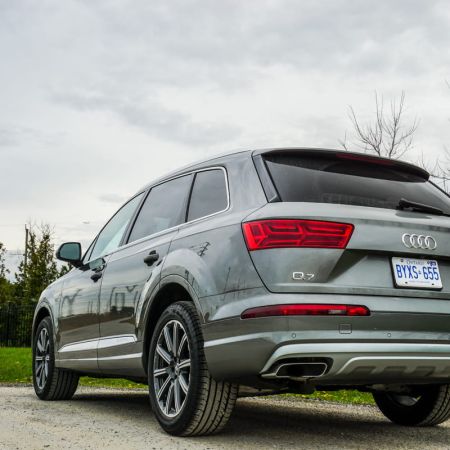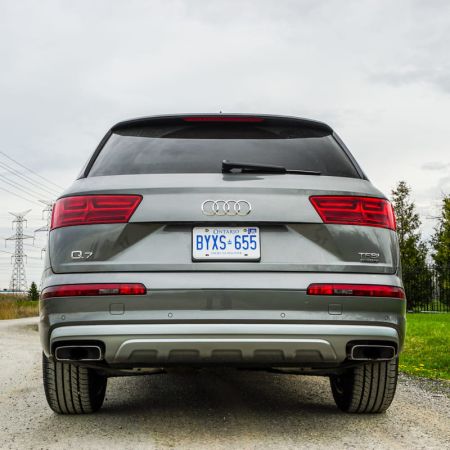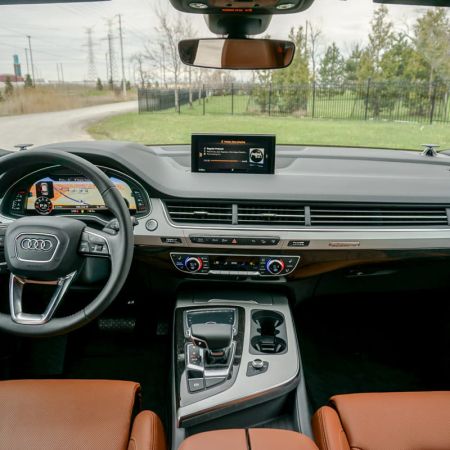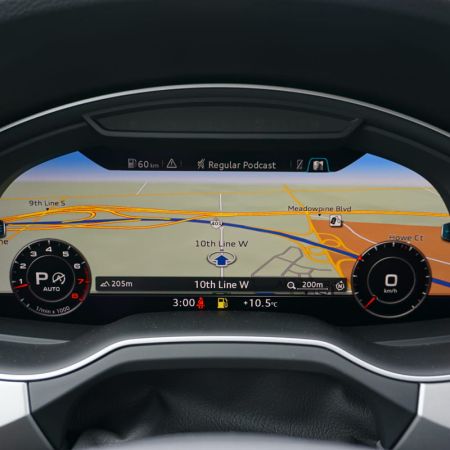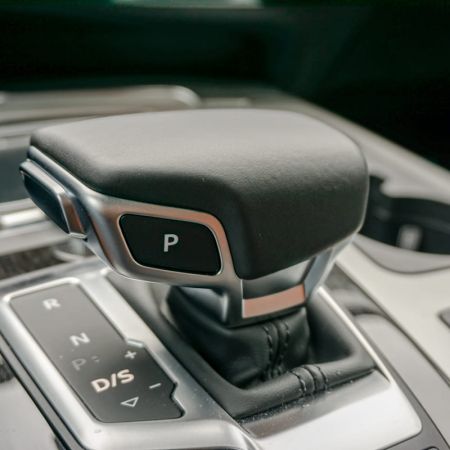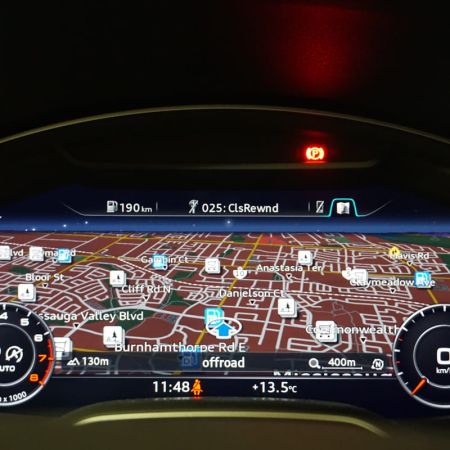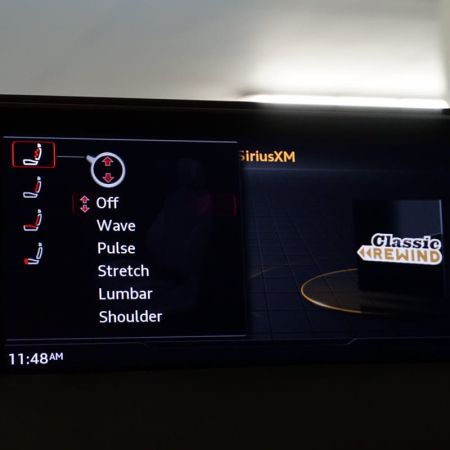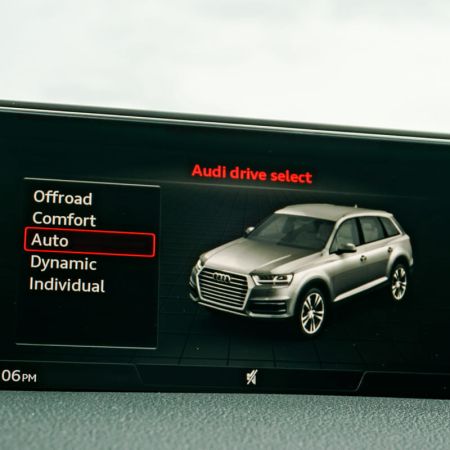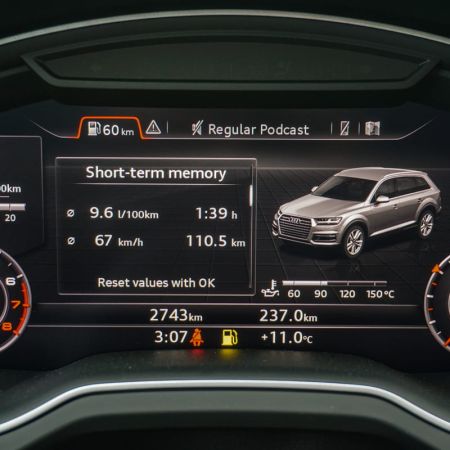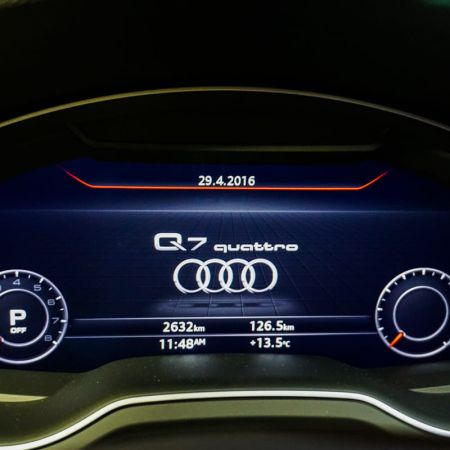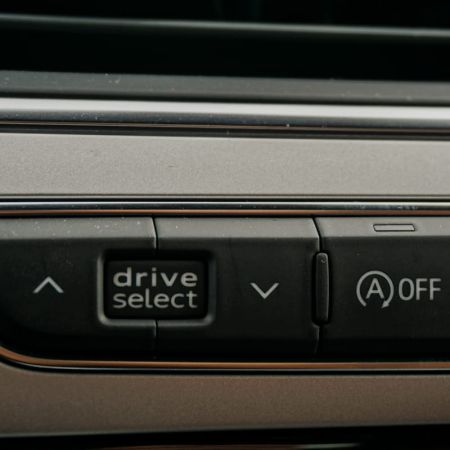Understated elegance is the name of the game, and this is a sport Audi has become an expert at playing. It’s pretty hard to believe that the Q7 full-size SUV has been gracing Canadian households for over a decade now, because it has aged very well. With the successful overhaul of one of the biggest players in its segment, the Volvo XC90 (reviewed here), it was inevitable for Audi to pull out all the stops for their big reveal. Nearly a year after we first saw it in person, we were sent a fully loaded 2017 Audi Q7 quattro Technik for a week to determine whether or not it can dethrone the XC90 as our favourite luxury SUV currently for sale.
The old Q7 was on a platform codenamed PL71, which underpinned the Volkswagen Touareg and Porsche Cayenne (reviewed here). The new model employs the all-new MLB 2 platform, which is also the basis for the all-new A4 and forthcoming A8. It’s inevitable that the next-generation A6 will also be a product of MLB 2. The biggest advantage to the new model is weight savings, as it’s hundreds of pounds lighter than the outgoing model. The styling is very conservative without foregoing any of the Q7’s elegance. The 2017 model is still unmistakably Audi, with the large slatted grille up front and a similar profile to the outgoing car.
Something that really stands out on the Q7, front and rear, is the lighting. It’s expected for a vehicle in this price range to use full LED lighting all around, but the Q7’s headlights and taillights use unique piping to mimic the shape of an airplane. It’s stunning at night, and gives the already-classy SUV some added substance. This thing is all business, and the 20” alloy wheels and “quattro” badge on the rear doors remind you that this is likely one of the most sinister and intelligent choices one can make.
The Q7 isn’t just business on the outside, the interior is beautiful and can be compared with the best luxury cabins on the market. Unlike past Audi vehicles, it isn’t just function over form. Our test vehicle was equipped with beautiful Valcona leather in Cedar Brown, which contrasted perfectly with the Graphite Gray exterior. The upholstery is just as nice to sit in as it is to look at, and the premium seats on the Luxury Package are also ventilated and provide a massage function that is second to only Mercedes-Benz in the industry. My behind preferred these seats significantly to the ones in the all-new BMW 750Li (reviewed here).
Ahead of the driver, there are no traditional gauges. Instead, Audi’s Virtual Cockpit consists of 12.3” of TFT goodness. This screen, used as the primary and only multimedia screen on the new TT-S (reviewed here), is capable of displaying navigation info including a full colour map, multimedia information, and the usual trip computer. There’s also a central screen with Audi’s latest version of MMI, controlled via either a giant touchpad or a traditional MMI controller. If Virtual Cockpit is all you want to use, the main screen slides slickly into the dashboard at the touch of a button.
Highlighting the new MMI system is a more user-friendly interface, better graphics, and most importantly – the inclusion of Apple Car Play and Android Auto. This was my first time experiencing these latest smartphone integration technologies without an actual touchscreen, and Audi has executed this very well. It takes a little bit of getting used to, but the advantage here is no pesky fingerprints or smudges on the crisp screen. Thankfully, like other new Volkswagen an Audi products, wired devices can be connected via regular USB ports as opposed to requiring Audi’s proprietary cables.
A temporary weakness of the whole Virtual Cockpit/MMI system is that Audi Connect is not yet available in Canada, which means that the maps are proprietary to MMI. The Audi Connect setup is capable of connecting to the Google Maps database, and delivering satellite images in brilliant clarity to both screens on the Q7. Audi Canada insists that this system will eventually make its way to this country, but until then, we’re forced to look at standard MMI maps. This isn’t a bad thing, because MMI has great quality overall, but the system is a bit slow to operate and we experienced a few glitches during our test.
The technology on the new Q7 doesn’t stop at Virtual Cockpit – the engineers at Audi put all of their resources into ensuring this vehicle has literally everything. The Audi PreSense city safety feature uses radar and cameras to alert the driver if an obstacle, pedestrian or vehicle enters your path. It’s also capable of bringing the vehicle to a full stop if required. The Adaptive Cruise Control also has steering assist to help if the vehicle is veering out of the lane, and there is also a Traffic Jam Assistant to maintain distance and apply the accelerator/brakes to reduce stress during gridlock.
Considering the whole Volkswagen/Audi diesel scandal has yet to be properly resolved, the TDI diesel model is expectedly absent from the new Q7 lineup. The only powertrain choice is the 3.0L supercharged V6, given the “TFSI” nickname. The power band is linear, and the supercharger helps haul the near-5,000lb SUV move along at lower RPMs. Output here is 333 horsepower and 325 lb-ft of torque, and Audi claims it can pull to 100km/h in just 5.7 seconds. This is an entire second quicker than the XC90, which isn’t insubstantial. The supercharged six is a slightly modified version of the motor in the dearly departed S4 that I love so much (reviewed here), and feels very responsive.
Gone is the old seven-speed transmission, and all 2017 Q7s are equipped with an eight-speed automatic, the same ZF unit we have now sampled in various other Audi products. It’s a great unit, and the Q7 features Sport mode as well as paddle shifters on the steering wheel for those that want a little bit of involvement. Seeing as this isn’t an S-branded vehicle, we chose to let the gearbox do its thing for the majority of our test period, and it did a near-perfect job, excluding some confused shifts at traffic-jam speeds.
Where the Q7 trumped the XC90 unquestionably was in ride quality. As most German vehicles do, the big Audi rides in an almost teutonic manner, overpowering potholes like they weren’t there to begin with, and there’s nary a rattle or squeak to be heard. The entire SUV feels like it has been carved from a solid block of metal, and it’s noticeably more stable at highway speeds than the XC90. From our experience, both the XC90 and the BMW X5 (reviewed here) are prone to a little bit of wallowing at higher speeds, a trait that the Q7 resolves effortlessly.
I have personally driven cross-country in a 2014 Q7 with the same powertrain (different transmission) and averaged about 13L/100km, so I kind of knew what to expect with regards to fuel economy. However, the new model’s weight savings and extra cog on the transmission helped in this department quite a bit. Over a week’s worth of driving with a good mix of city, I averaged 11.6L/100km on premium 91-octane fuel. I also observed a couple of highway trips displaying efficiency as low as 9.3L/100km, and the tank will hold 85L of the good stuff.
Pricing for the all-new Audi Q7 starts at $65,200 for the base Komfort. At this price point, the car does not include things like Virtual Cockpit or the premium Valcona leather. Our tester was the top-trim Technik, priced at $73,500. On top of this, the Driver Assistance Plus package (at $3,400) adds Audi active lane assist, traffic sign recognition, Audi PreSense Plus, adaptive cruise control, and heads-up display. The Luxury Package ($3,750) adds Valcona leather, front seat ventilation and massage, and soft close doors. The Bang & Olufsen audio package boasts 23-speakers and a 3D surround sound experience, and will set you back $5,100 more. The total sticker for our vehicle was just under $90,000.
The only thing I wasn’t a huge fan of is the new gear selector. It uses a similar layout as the one in the Audi A8/S8 line, but has a new design and a standalone button to engage “Park”. I could predict unfamiliar drivers pushing the lever forward and taking their feet off the brakes, thinking it’s in “Park” while the vehicle actually stays in reverse. The shifter was also hesitant to engage reverse a few times, and required some proper planning. Quick city parallel-park attempts were faced with an argumentative “Nope!” from the car. Of course, this is the first application for this new unit, so I expect the bugs to be worked out shortly.
If the new Q7 had debuted just before the current Volvo XC90 (reviewed here), it would have redefined the segment and upped expectations considerably. However, the way I see it, the Audi excels at everything the Volvo does, and then adds a little bit of flair and a touch of refinement to give it that extra touch of refinement over its Swedish rival. Both vehicles are exceptional, but the 2017 Audi Q7 quattro Technik goes the extra mile to deliver on its promise to be one of the most comfortable, dynamic, and feature-packed SUVs on the road today.

